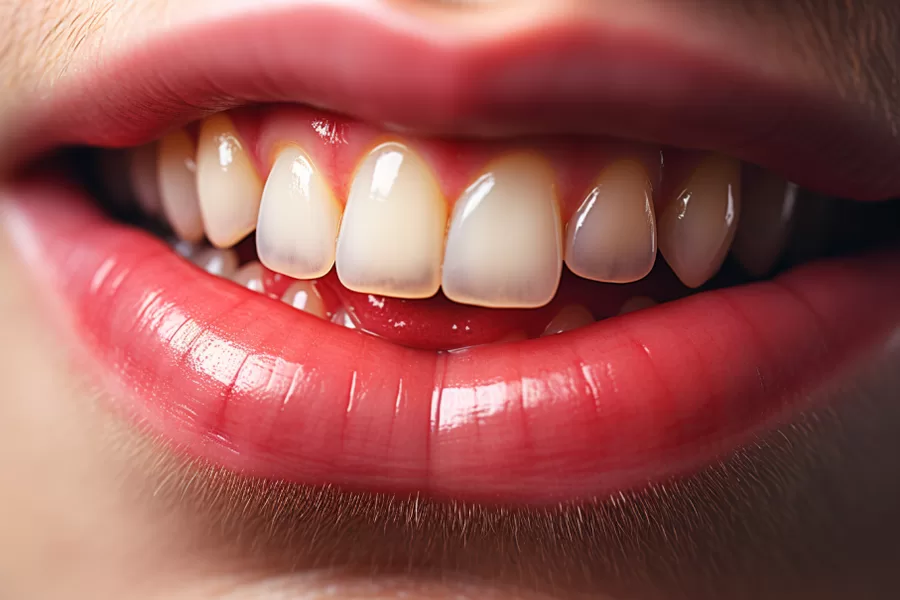There’s no precise statistic on how often people get oral bacterial infections. In many cases, they are overlooked by healthcare professionals just because people with such a problem rarely visit a doctor. Anyway, almost each of us has had a bacterial infection in the mouth at least once in our lifetime. Therefore, learning a bit more about the causes of this condition, its diagnosis, treatment, and prevention will come in handy for every reader.
Mouth Anatomy. What Are Oral Bacteria?
What can be simpler than mouth anatomy? Each of us has seen our mouths open in front of the mirror multiple times. However, not everyone understands that our mouth is a part of our digestive system, which also participates in our breathing and speaking processes. Our mouth also plays an essential role in our taste perception, so this part of our body should be taken good care of if we still want to enjoy this life.
The Anatomy of the Mouth
Let’s take a closer look at what we have in our oral cavity:
- Oral mucous membrane, which covers the entire surface of the inside of the mouth.
- Gums to hold the teeth in their places.
- Teeth, there should be 32 of them, to chew the food.
- Three pairs of salivary glands, which produce saliva.
- Sensory receptors help us feel the temperature of the food and its texture.
- The tongue is, basically, a strong muscle that moves food around the mouth and participates in speaking.
- Taste buds are found all over the tongue. They let us feel the entire spectrum of tastes.
- The hard palate and soft palate make up the upper part of the mouth cavity.
- The floor of the mouth is under the tongue.
- Uvula – a small piece of flash at the back of your mouth that helps move the food towards the throat.
- Lips are also part of the mouth.
Good and Bad Bacteria
As you can see, our oral cavity is a complex system. What’s more, it has its own unique ecosystem formed by bacteria. Every person has a unique collection of both good and bad bacteria living in their mouth. In the norm, they live in homeostasis, which is in balance.
However, the colonization of the oral cavity with new microorganisms, which can be viral, bacterial, or fungal in nature, will cause an imbalance, thus provoking a disease.
The role of the “good” bacteria in the mouth ensures the health of your teeth and gums, while also keeping the population of “bad” bacteria at bay.
Risk Factors for Oral Bacterial Infections
Your chances of getting bacterial oral infections strongly depend on your lifestyle choices and your general health condition. The most significant risk factors include the following.
Poor Oral Hygiene
The recommendations of health organizations regarding oral hygiene haven’t been created out of nowhere. They are the result of many years of studies and the clinical experience of millions of people around the globe. Poor oral hygiene is one of the first and most significant factors contributing to the development of pathogenic microorganisms.
Smoking and Tobacco Use
The Centers for Disease Control and Prevention prove that smoking and using smokeless tobacco increase the risk of developing bacterial and fungal infections in the mouth. That’s due to the harm to local immunity that results from cigarette smoking. On top of that, smoking significantly elevates the risk of oral cancer.
High-Sugar Diet
The presence of excess sugar in a diet is another factor contributing to the growth of bad bacteria and, consequently, infection in your mouth. The reason is that sugar-benefiting bacteria have more favorable conditions to harbor in the oral cavity.
The imbalance caused by sugar consumption leads to the development of caries on your teeth, which eventually becomes an endless source of infection in the mouth.
Alcohol Consumption
Alcohol consumption causes dysbiosis in the oral cavity. A study involving 150 drinkers and non-drinkers proved that people who consumed alcohol had significantly elevated levels of bad bacteria. In non-drinkers, on the other hand, the good bacteria were dominating.
Weak Immune System
When our immunity doesn’t work the way it should, any contact with potentially dangerous bacteria can grow into a full-blown infection. This works not only with our mouth but with the entire body as well. A weak immune system can’t sustain a balance between the good and bad bacteria in the mouth, which often causes imbalance and infection.
Symptoms of Oral Bacterial Infections
Depending on the pathogen that provokes an infection and the infection site, you may experience different symptoms. Let’s take a look at some of the most typical oral bacterial infection symptoms in children and adults.
Swollen and Bleeding Gums
Swollen, painful, and bleeding gums are a clear sign of infection in the mouth. This medical condition is called gingivitis, or gum disease. One of the key factors provoking it is the overgrowth of dental plaque caused by poor dental hygiene.
While bacteria are the most common cause of this symptom, fungal infections (like thrush) can also be the reason for your bleeding gums.
In children, a tooth that hasn’t completely emerged can cause swollen and bleeding gums. It can still be covered with a flap of gum and cause multiple problems, including gingivitis.
Bad Breath
The bad-smelling breath, called halitosis, is another sign of infection going on in your mouth. This condition is caused by sulfur-producing bacteria. Their extensive growth may be caused by smoking, poor oral hygiene, and some foods. Periodontal disease is another medical condition that may show through bad breath.
Tooth Pain and Sensitivity
A tooth infection is one of the most bothersome as it significantly interferes with our quality of life. Increased sensitivity to hot, cold, or sugary foods and drinks are the first warning signs of an infection developing in the teeth. You may still not see any color changes in the affected tooth, yet you’ll surely feel its increased sensitivity. Your teeth can also become sensitive to pressure, which makes chewing food almost impossible.
When the sensitivity grows into tooth pain, it means the infection has spread further and there’s no way to delay treatment anymore.
White Patches in the Mouth
White patches in the oral cavity may appear due to several reasons, including bacterial infection, fungal infection, viral infection, and the medical condition called leucoplakia.
Most often, such a symptom is a sign of a fungal infection, in simple words, thrush. Its characteristic feature is that you can remove it, yet it comes back soon after that if left untreated.
When the cause of the symptom is bacteria, it requires antibiotics to cure it.
White plaques may appear in the mouth as a sign of herpangina, a medical condition provoked by a herpetic viral infection.
Rarer, the reason for the white patches in your mouth is leucoplakia. The white patches, in such a case, are located on your gums, cheeks, mouth bottom, and tongue. Unlike thrush, the white patches of leucoplakia cannot be removed with a cloth. This oral health condition can grow into a malignancy and requires continuous monitoring.
Fever and Sore Throat
Running temperature and sore throat are characteristic of bacterial infections caused by Streptococci. This kind of infection is more common in children, though it may affect people regardless of their age.
Along with the fever, you can also feel pain when swallowing or speaking. The infection can easily be distinguished visually. Your throat will look swollen and red. Sometimes, you will see white patches on the tonsils and uvula.
Diagnosis and Treatment
The sooner you ask for medical help, the easier it will be to stop the spread of the infection and get rid of the bothersome symptoms. The oral bacterial infection treatment will depend on the type of infection you have, the organ or area affected, and the severity of the symptoms.
Regular Dental Check-ups
Visiting a dentist every six months is an effective way of preventing infection and resolving any signs of it at an early stage. Regular dental check-ups allow monitoring of the current condition of your teeth and gums and the mouth cavity overall.
Antibiotics
When the source of the infection in the mouth is not a tooth that needs filling, your healthcare provider will most likely recommend taking a course of oral bacterial infection antibiotics to fight the infection. The preparations most commonly used in the therapy of full-blown bacteria-provoked diseases include Amoxicillin, Cefoxitin, Azithromycin, and Metronidazole. Please note that only a medical professional can prescribe an antibiotic. You should never take such drugs for self-treatment.
Learn more about Amoxicillin Over the Counter
Antibacterial Medications
You can deal with the infection with a range of over-the-counter oral bacterial infection medicine. Typically, they are intended for local application, which means they may come in the form of antibacterial sprays, chewing gums, or candies.
Oral Surgery
If the infection comes from an affected tooth, you may need to undergo oral surgical treatment. Usually, it is recommended when there’s no response to conservative treatment and no other way to save your tooth and get rid of the source of the infection in the oral cavity.
Prevention of Oral Bacterial Infections
It’s always better to prevent a problem than deal with it. That’s why you should know about and follow some simple advice to keep your oral cavity healthy.
Oral Hygiene Practices
One of the simplest and most effective ways to sustain a healthy microbial ecosystem in your mouth is by practicing good oral hygiene. Here are some pieces of advice on what you should do:
- Brush your teeth thoroughly twice daily;
- Choose fluoride-containing toothpaste;
- Don’t forget to brush your tongue (YES!);
- Use dental floss each time you brush your teeth;
- Rinsing your mouth with mouthwash is a good idea for cleaning hard-to-reach places.
While these may seem a lot, following healthy dental care practices won’t take more than 20 minutes of your day.
Healthy Diet and Nutrition
Enriching your diet with fruit, veggies, and calcium-rich foods is a great way to keep your teeth, and mouth overall, healthy. Also, you should limit sugary drinks and foods, tea, coffee, and high-acid products to prevent enamel damage.
Limiting Tobacco and Alcohol
Smoking and drinking do a lot of damage to the oral mucosa and the local microbiome. Mouth dryness, gingivitis, bad breath, and a range of other oral health conditions develop because of the wrong lifestyle choices. By limiting alcohol and cigarettes, you can reduce the negative influence of these things on your oral health and overall organism.
Summary
People often ignore their oral hygiene. Smoking, alcohol, and sweets consumption are daily norms for millions of people. And while no one can make you change your lifestyle choices, we should still spread awareness about the consequences of neglecting your oral health.
Bacterial infections of the oral cavity are no joke, as they dramatically change the quality of your life. Feeling continuous pain when eating, drinking, and even talking is challenging even for an adult, let alone a child. Luckily, proper oral hygiene and lifestyle choices can help you prevent all those problems and live a healthy and happy life.
FAQ
What kind of bacterial infections can you get in your mouth?
There’s a broad range of oral medical conditions you may suffer, such as hand, foot, and mouth disease, gingivitis, dental caries, and others.
How do you know if you have a bacterial infection in your mouth?
This shows through a range of symptoms, including painful and swollen gums, bad breath, white plaques in the mouth, and fever.
What is the most common bacteria in mouth infection?
Streptococcus mutans is the bacteria most often responsible for tooth decay and oral bacterial infections.
What causes bacterial infections in the mouth?
Poor oral hygiene, smoking, alcohol consumption, and an excess of sweets in a diet are among the factors contributing most to the development of bacterial infections.




